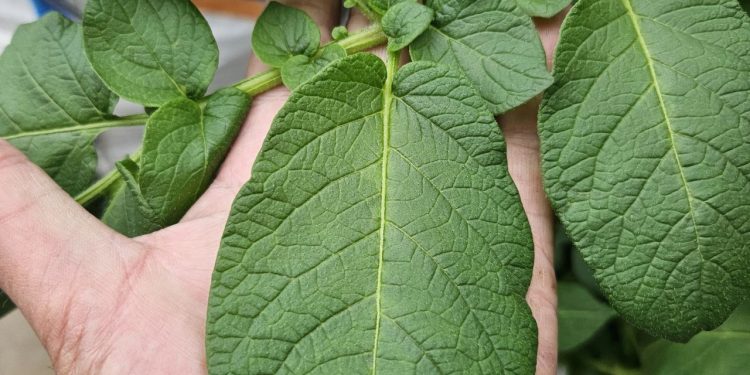Breakthrough Techniques in Potato Farming Show Promising Results
Recent developments in super-intensive potato cultivation have demonstrated significant advancements in sustainability and efficiency, as reported by Manuel Ujados. The innovative methods applied in these trials are setting new standards for potato farming, showcasing remarkable improvements in plant health, growth, and resource management.
Exceptional Plant Health Without Chemicals
On the 43rd day of the super-intensive potato cultivation trials, the plants exhibit outstanding health and vigorous vegetative development, all without the use of pesticides or phytosanitary products. The results, evident in the provided photographs, highlight a thriving crop that benefits from advanced agricultural practices prioritizing natural growth processes.
The complete elimination of chemical fertilizers and mineral fertilizers marks a significant step towards sustainable farming. By avoiding these inputs, the super-intensive method supports healthier soil ecosystems and reduces the environmental footprint of potato farming. This approach aligns with the growing demand for organic produce and environmentally friendly agricultural practices.
Drastic Reductions in Resource Use
One of the most impressive aspects of the super-intensive cultivation method is its efficiency in resource utilization. The trials have achieved an over 80% reduction in irrigation needs, a critical factor given the increasing concerns about water scarcity in agriculture. This substantial decrease not only conserves a vital resource but also lowers operational costs for farmers.
Additionally, the method boasts a reduction of more than 97% in the use of nitrogen fertilizers (UF), which are traditionally a significant input in potato farming. This dramatic decrease helps mitigate the environmental impact associated with nitrogen runoff and groundwater contamination.
Economic and Quality Benefits
The super-intensive cultivation method offers numerous economic advantages. By eliminating the need for pesticides and phytosanitary products, farmers can significantly reduce their input costs. The method also cuts irrigation water usage by 80%, leading to lower water bills and more sustainable water management practices. Furthermore, the reduction of energy costs by 95%—including electricity and diesel—translates into substantial savings and a smaller carbon footprint.
In terms of potato quality, the super-intensive method delivers outstanding results. The potatoes produced are of the highest quality, meeting market demands for premium produce. This high standard ensures better marketability and potentially higher prices for the farmers.
Conclusion
The super-intensive potato cultivation method presents a revolutionary approach to potato farming. By maximizing efficiency and sustainability, it addresses some of the most pressing challenges in agriculture today. The elimination of chemical inputs, drastic reduction in resource usage, and significant economic benefits make this method a promising solution for the future of potato farming.
Farmers, agronomists, and industry professionals should closely monitor these developments as they represent a significant shift towards more sustainable and profitable agricultural practices.








